IRRPP State of Racial Justice in Chicago Project
IRRPP's State of Racial Justice in Chicago reports provide a comprehensive picture of the inequities and changing conditions that racial and ethnic groups in Chicago face in the last half century. These reports provide accessible data and analysis on how racial and ethnic groups in Chicago are faring in relation to housing, economics, education, justice, and health and are meant as a resource for the development of new engaged research projects and policy solutions.
Please note that report PDFs are large files. Downloading on handheld devices over wi-fi is not recommended.
Support IRRPP Research Reports
Beyond Erasure and Profiling: Cultivating Strong and Vibrant Arab American Communities in Chicagoland Heading link
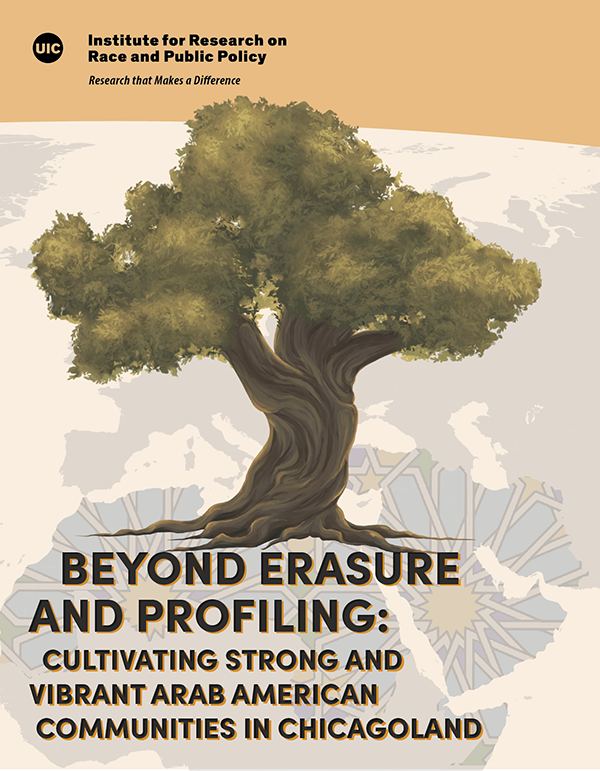
This report captures the conditions and experiences of Arab Americans in the Chicagoland area. The report uses demographic research, surveys, focus group data, as well as expert commentaries by organizers and academics to analyze how systemic inequities and anti-Arab/anti-Muslim racism affect the lives of Arab Americans in employment, education, health care, housing, and policing. The report engages with the diversity of experiences among Arab American communities and their common challenge in navigating being at once hypervisible as a result of commonplace stereotypes as well as invisible due to being classified as white by government agencies and due to the general lack of knowledge about Arab Americans in our society.
This report was produced in partnership with several Chicagoland Arab American community organizations: UIC’s Arab American Cultural Center, Arab American Action Network, Arab American Family Services, Middle Eastern Immigrant and Refugee Alliance, Sanad Social Services, and the Syrian Community Network. By mapping the challenges facing Arab American communities and making proposals for change, the report will be used as a resource for advocates working to build strong and vibrant Arab American communities.
Changing the Frame: Civic Engagement Through A Racial Equity Lens Heading link
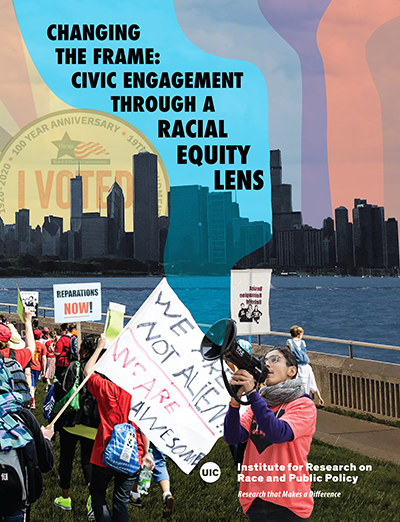
Since Robert Putnam’s book Bowling Alone: America’s Declining Social Capital came out in 2000, policymakers, nonprofit funders, and pundits have sent out warning signals about declining civic engagement in the U.S. The 2010 Chicago Civic Health Index report began with the startling assessment that “Chicagoland’s civic health is on life support.” However, traditional measures of civic engagement tend to be rooted in a framework that privileges voting and particular forms of volunteering. This narrow focus obscures a broader range of civic activities disproportionately practiced by Black, Latinx, and working-class people.
In this report, we provide a broader analysis of civic life using a racial equity lens. We take into account racial inequities and the practices and policies that reinforce them along with the perspectives of people engaged in the critical work of addressing these inequities. By incorporating a racial equity lens and the voices of these community actors into our analysis, we hope to broaden the discussion of what counts as civic engagement and better understand how to encourage it.
Shifting Population Trends in Chicago and the Chicago Metro Area Heading link
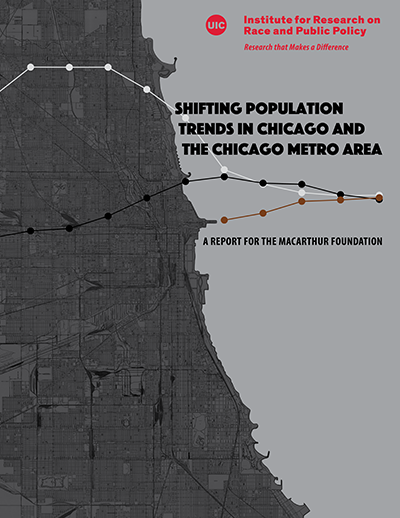
Few cities have seen such tremendous population changes as Chicago over the past century. By 1920, Chicago was the fastest growing city in the U.S. In 1950, the Chicago Metropolitan Area was the eighth largest in the world, with a larger population than Beijing, Mexico City, and Rio de Janeiro. Half a century later, population trends have changed dramatically. From 2000 to 2010, Chicago was the only U.S. city among the ten largest to lose population. Since 2010, Chicago’s population has grown slightly, but at rates lower than all other major U.S. cities.
In this report, we explore these complex population trends for the city of Chicago and the Chicago Metropolitan Area. Factors driving population changes in the Chicago region are experienced differently across race. Drawing from a full century of data, we uncover distinct population trajectories for Black, Latinx, and white residents (the three largest groups in the area), showing how population growth for some groups often occurs alongside population decline for others. We also investigate the relationship of these population shifts to levels of inequality in the region, showing how population loss is often precipitated by increased racial inequality.
475,106 Mistakes: The Cost of Erroneous Parking Tickets Heading link
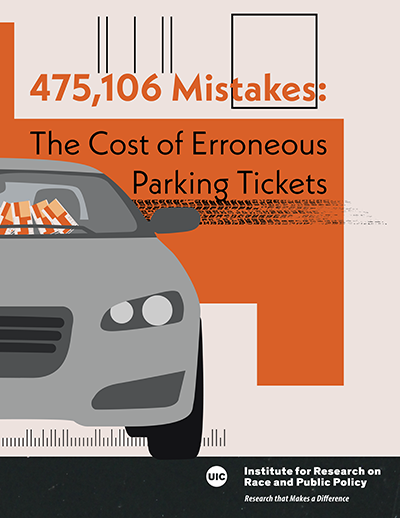
In this report we analyze nearly 3.6 million parking tickets issued in Chicago between August 2012 and May 2018 where complying with parking restrictions depended on time, weather, and location restrictions and identified that more than one in eight tickets (13.2%) were issued in error. Erroneous tickets served as a $35.5 million dividend for the City of Chicago during the six years the analysis covered. The 475,106 erroneous tickets we identified in this period generated more than $27.5 million in revenue.
Furthermore, only 7% of tickets written under false pretenses are contested, and nine of the 10 community areas with the lowest appeal rates are majority Latinx. More than 20% of inaccurate tickets are subject to late penalties and majority Black community areas represent the 20 community areas with the highest percentage of late penalties tied to flawed tickets. While paying a ticket or taking the time to contest it may be minor inconveniences for some, these erroneous parking tickets amplify the vulnerability of those already vulnerable.
Deadly Disparities in the time of COVID-19: How Public Policy Fails Black and Latinx Chicagoans Heading link
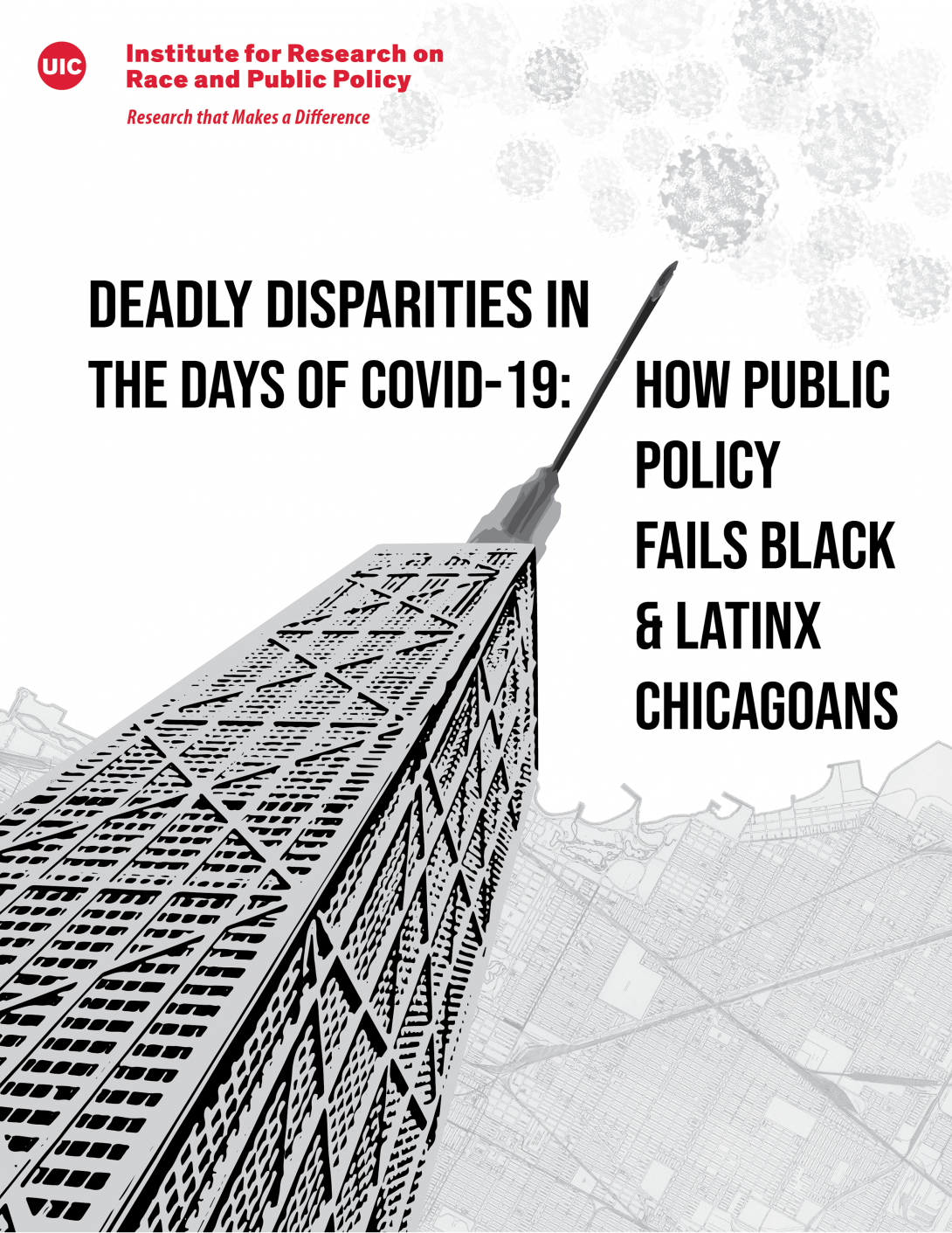
In this report we center the lived experiences Black, Latinx, and white residents of three neighborhoods — Austin, Little Village, and Albany Park — in order to explore how the pandemic has impacted different communities in the city. Drawing on over 150 interviews with residents and policy makers, we find that while COVID-19 has been treated as a health crisis at the federal, state, and local levels and thus has been fought through a series of public health strategies, the residents we spoke to experienced it as a much broader crisis related to housing, jobs, childcare, schooling, and healthcare.
The policy response to COVID-19 gave explicit attention to racial equity but, for a number of reasons we lay out, often fell short in meeting the needs of the most vulnerable. Longstanding structural inequities meant that low-income and working-class Chicagoans were more vulnerable both to the disease and to the impact of disease mitigation strategies (e.g., economic fallout of the shutdown).
Chicago's Racial Wealth Gap: Legacies of the Past, Challenges in the Present, Uncertain Futures Heading link

By the time they reach adulthood, Black and Latinx children born to middle income families in Chicago are far less likely than White children from families with the same income to remain in the middle class or to attain a college degree. These patterns in downward mobility among middle class Black and Latinx Chicagoans are much worse than national averages, raising important questions about the future of Black and Latinx communities in Chicago.
In this report, we argue that we need an in-depth understanding of wealth inequality to comprehend why middle class families in Chicago seem to be on such different trajectories. The report centers the life experiences of middle class Black, Latinx, and White families to demonstrate that there is much work to be done to support our middle class families, many of whom are contending today not just with the legacies of past inequities, but also with the ongoing failures of public policy to address basic needs.
Between the Great Migration and Growing Exodus: The Future of Black Chicago? Heading link
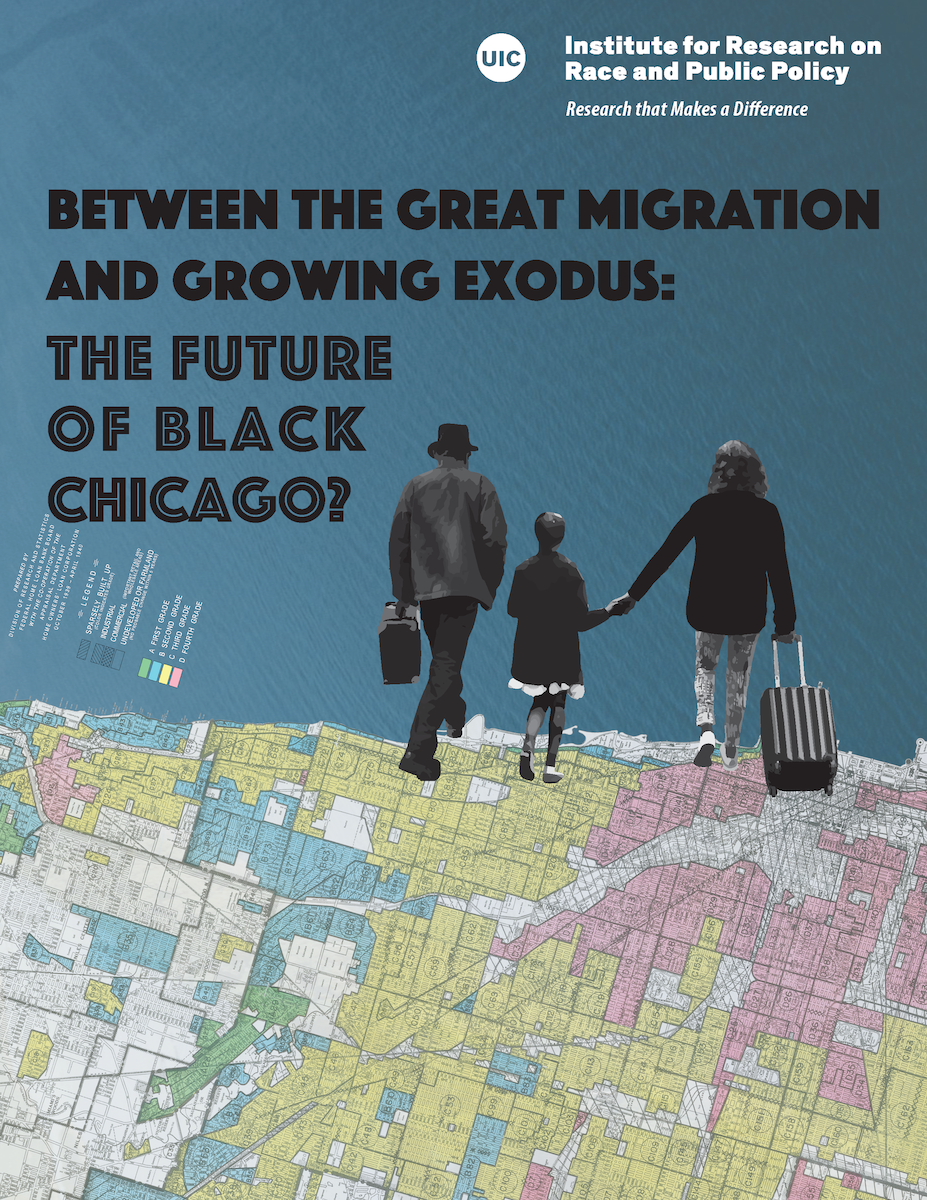
Starting in 1980, Chicago’s African American population growth not only halted, but reversed. By 2016, the population of black Chicagoans had decreased by 350,000 from its peak in 1980. These population trends have attracted significant media attention and speculation about why black Chicagoans are leaving the city.
Given these trends, IRRPP set out to analyze what the data on population in Chicago can tell us about black migration into and out of the city. In this report, we assess the historical context of shifts taking place over the past 100 years, provide a more detailed analysis of population change across Chicago neighborhoods from 1990 to 2016, and examine where Chicagoans who are leaving the city are going.
Adversity and Resiliency for Chicago's First: The State of Racial Justice for American Indian Chicagoans Heading link
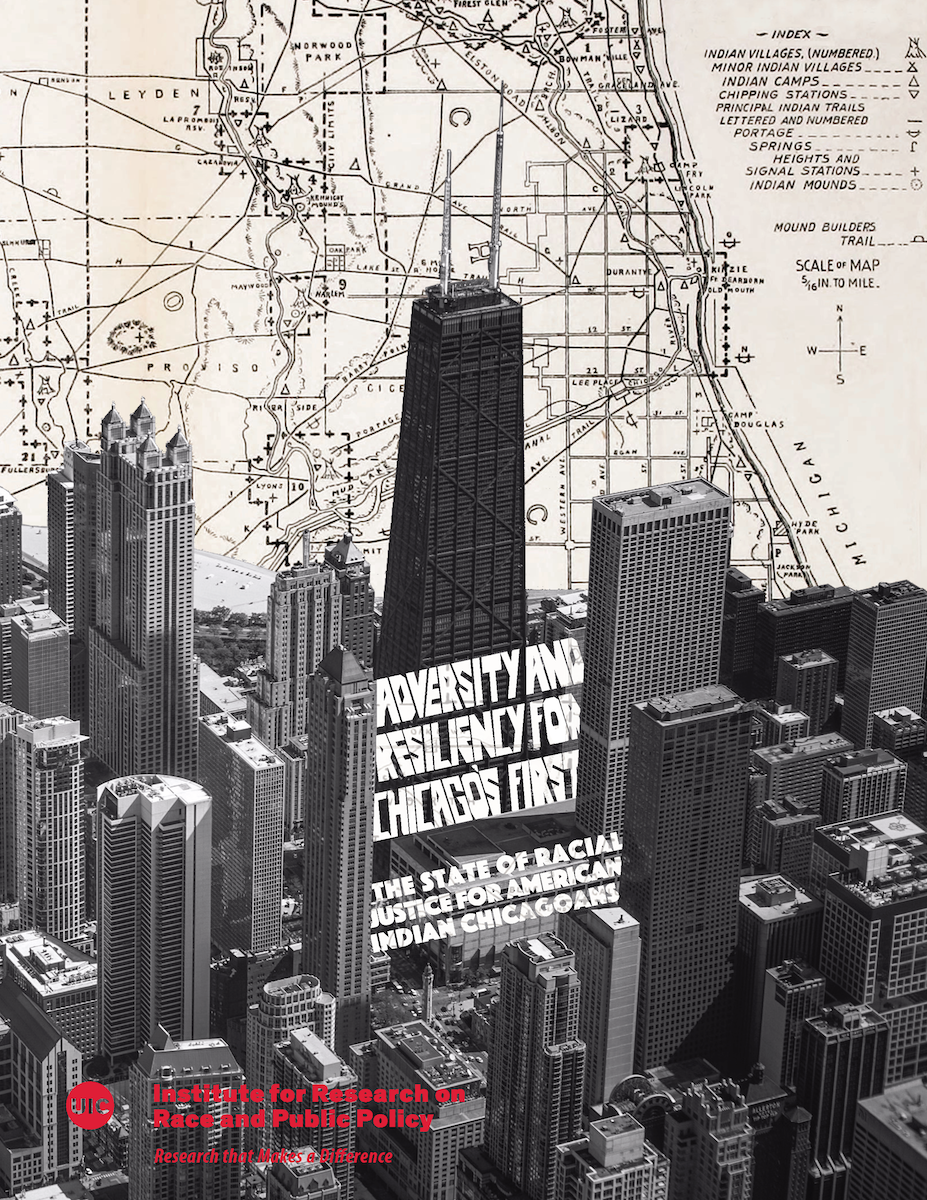
Although Native American Chicagoans play a central role in the social fabric of the city, relatively little attention has been directed to documenting the experiences of racial discrimination and inequities for Native American Chicagoans. In this report, we examine the state of racial justice for Native Americans in Chicago.
Our report is organized across five substantive areas, Population, Housing, (Mis)Representations of American Indians in Popular Culture, Education, Economics, and Justice, each focusing on a different aspect of racial equity. In each section, we draw on available data to describe the current conditions and experiences of Native American Chicagoans, including areas where they are thriving and areas where they are negatively affected by the legacy of racial exclusion as well as ongoing discrimination.
A Tale of Diversity, Disparity, and Discrimination: The State of Racial Justice for Asian American Chicagoans Heading link
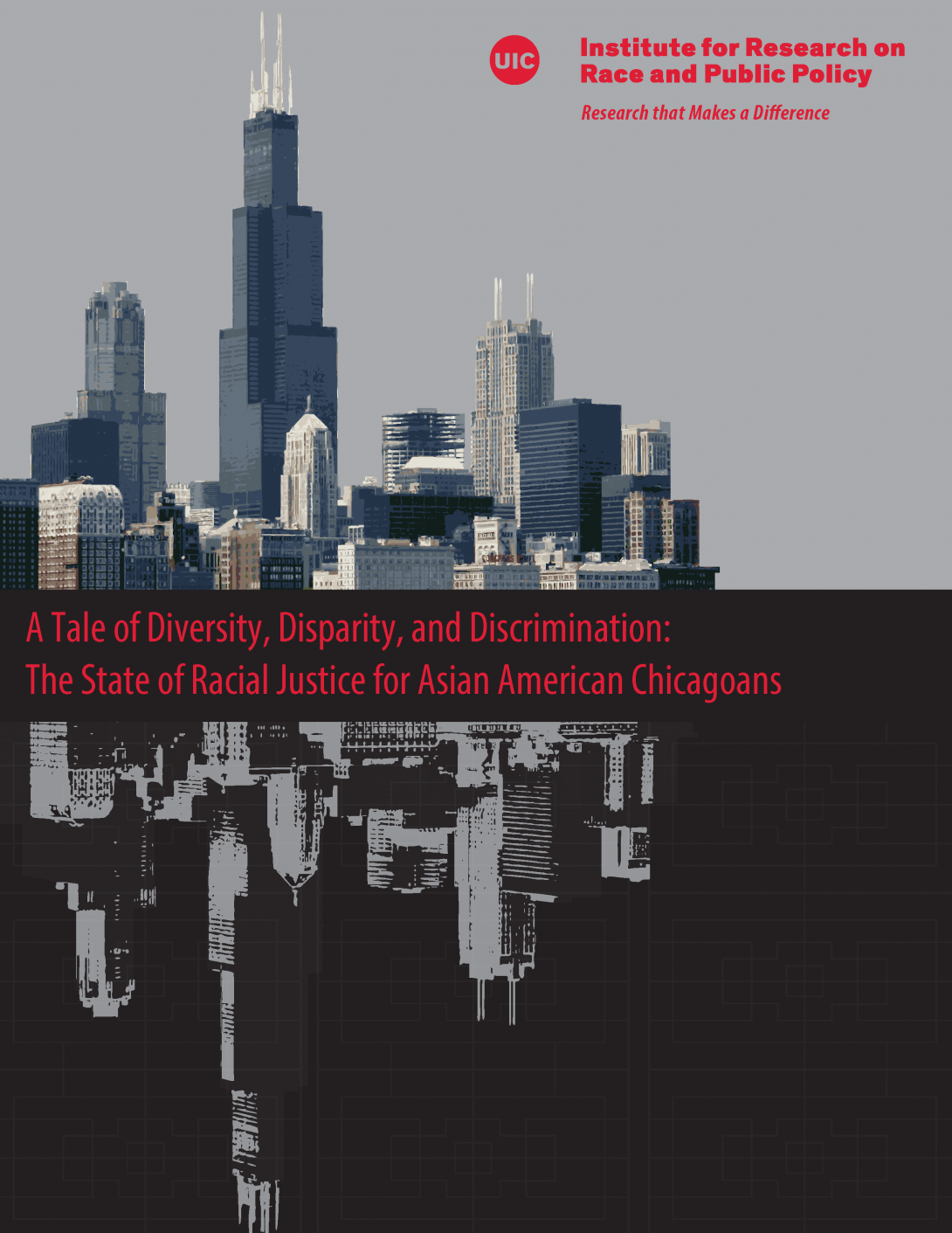
Relatively little attention has been directed to documenting the experiences of racial discrimination and inequities for Asian Americans in Chicago. In this report, we examine the state of racial justice for Asian Americans in Chicago. The data in this report illustrate the diverse and often divergent experiences of Asian Chicagoans who have to navigate the complexity and contradiction of model minority and forever foreigner stereotypes.
Asian Americans are both imagined as hard working and high achieving, and at the same time are often treated as permanent outsiders. A central finding of this report is that while diversity is a defining characteristic of this pan-ethnic group, racial inequities affect the opportunities and life experiences of all Asian American Chicagoans.
A Tale of Three Cities: The State of Racial Justice in Chicago Report Heading link
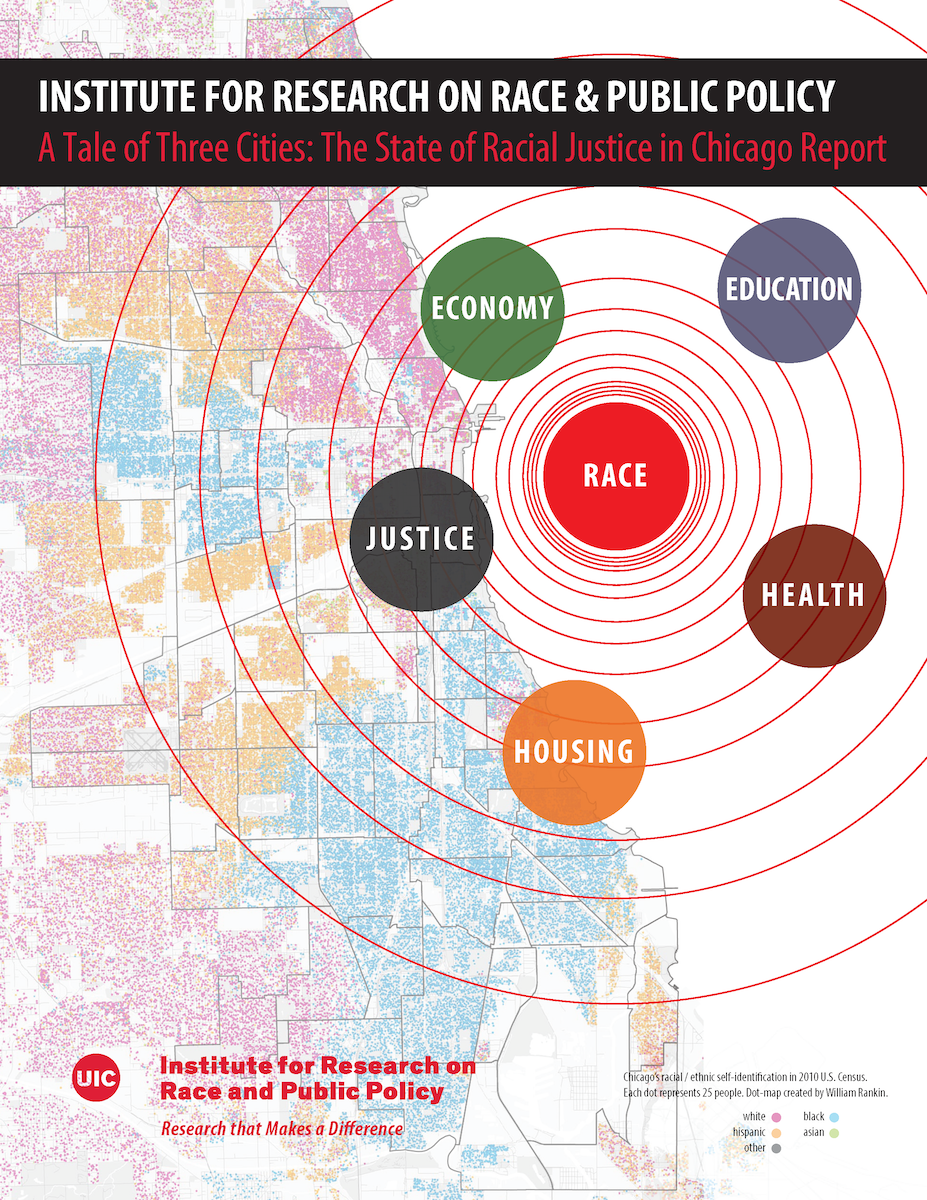
Chicago’s largest racial and ethnic groups—blacks, Latinxs, and whites—each make up roughly one-third of the city’s population. As this report reveals, these groups generally live in separate neighborhoods and have divergent experiences when it comes to housing, economics, education, justice, and health. Capturing life in Chicago today is in many ways a tale of three cities.
The central finding of this report is that racial and ethnic inequities in Chicago remain pervasive, persistent, and consequential. These inequities affect the lives of Chicagoans in every neighborhood; they have not just spatial but also deep historical roots and are embedded in our social, economic, political, and cultural institutions; and they have powerful effects on the experiences and opportunities of all Chicagoans.